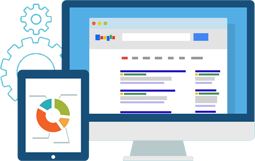
How Optimizing Your Website’s Images Can Help Get Your Company Noticed
We’re a visual society these days, and most people instinctively know that adding images to their webpage helps encourage readers to engage with the post. But, used correctly, images can have another function as well: getting the attention of search engines like Google.
Does Just Adding Images Work?
Not quite. There are a few best practices, as advised by an SEO company, that can help you optimize the images on your website in order to have the best effect on your page ranking on Google searches and, from there, on your traffic. Here are some things to consider:
-
Is Your Image Accurate?
This seems like a no-brainer, but make sure that your image is appropriate for your content. That is, if your content is an article about fashion, don’t include an image of women sipping tea. If you’re writing about airplane parts, a shot of two airplane mechanics at work would be more appropriate than a picture of a grinning pilot.
The best way to make sure your image is relevant, of course, is for it to be your own: a picture of your product or place of business. If you don’t have the time or inclination to use your own image, then do take the time to use a stock photo that fits your article as exactly as possible.
-
What’s In A (File) Name?
When it comes to how Google treats your images, everything.
After all, the algorithms that Google uses can’t “see” your image–it only knows what the image is if you name the file correctly. So if you’ve got a picture of the moon above the Grand Canyon, don’t call it “DF576.jpg”. Instead, name it something like “grand-canyon-arizona-moon.jpg”, and Google will associate it with the keyword “Grand Canyon”. Make sure to use the keywords you want associated with your page in the names of the images on that page.
-
Is Your Image The Right Size?
Large, unwieldy images can slow down the time it takes for your page to load, which will cause Google to demote your site in the search rankings. In this case, bigger is not better. Use the smallest image size possible without sacrificing quality.
-
Does Your Image Have Enough Detail?
Human brains are drawn toward anything that looks like a human face, to the point that even small babies will watch smiley faces drawn on a balloon instead of a more entertaining but abstract mobile. Your website visitors are more drawn to clear, detailed pictures of faces than they are to charts, or other abstract images. Make sure your images are a good mixture between human interest and compelling data.
-
Does Your Image Have Enough Context?
You’ve chosen the perfect image, made sure it’s the right size, and name it appropriately. But is there any other way to make sure that it gets Google’s attention–and make sure that your reader is engaged? A caption can be a placed to make it witty or informative, and utilize your keywords once again.
When you’re designing a web page, you would want to consult with an SEO company to make sure you don’t only improve the website design but also enhance its visibility on search engines and your site visitor’s experience. Well-curated, optimized images are a simple way to do just that.
Sources:
How To Optimize Images For Search Engines, Social Media, And People – www.seosmarty.com
Image SEO: Optimizing Images For Search Engines – www.yoast.com

